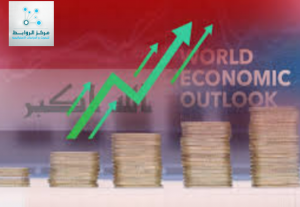The Iraqi Economy: Growth, Challenges, and Future Prospects
 The Iraqi economy is undergoing significant transformations toward economic diversification, reducing dependence on oil and strengthening other productive sectors. These transformations are essential in light of global energy price fluctuations and inflationary pressures, as developing non-oil sectors and improving public resource management are key to achieving sustainable growth and ensuring the well-being of citizens.
The Iraqi economy is undergoing significant transformations toward economic diversification, reducing dependence on oil and strengthening other productive sectors. These transformations are essential in light of global energy price fluctuations and inflationary pressures, as developing non-oil sectors and improving public resource management are key to achieving sustainable growth and ensuring the well-being of citizens.
Current economic situation
Iraq recorded 5% growth in non-oil GDP in 2024, driven by improvements in the agricultural sector and increased public spending. The fiscal deficit reached approximately 5 trillion dinars, equivalent to 1.5% of GDP, a low level that does not pose a threat to public debt, according to International Monetary Fund estimates.
The government seeks to restructure state-owned banks to improve their capacity to absorb government financing instruments and stimulate the local market. It is also appointing new staff to activate the public debt management system and analyze financial performance. The International Monetary Fund (IMF) mission has also expressed its willingness to provide technical and advisory support in the areas of tax reform and public debt management, to ensure the adoption of global best practices and enhance financial efficiency.
Transition to sustainable energy
The Iraqi government’s shift toward renewable energy reflects its interest in achieving economic and environmental sustainability. A plan has been launched to convert 6,000 government buildings to solar energy, reducing dependence on oil and enabling more efficient use of natural resources. This move supports economic diversification goals and enhances Iraq’s ability to cope with fluctuations in global energy markets.
Economic analysis
The growth in non-oil GDP reflects Iraq’s ability to achieve comprehensive and balanced development and reduce the economy’s vulnerability to oil price fluctuations. The low fiscal deficit also gives the state financial leeway to expand development and infrastructure projects without significantly increasing public debt.
Bank restructuring and activating public debt management are strategic tools for enhancing domestic financing and stimulating private investment, while cooperation with the International Monetary Fund supports financial reforms and ensures efficient management of public resources. Investment in solar energy also contributes to reducing dependence on oil and enhancing long-term economic sustainability.
Iraq’s economic future
Growth is expected to continue at 4% in 2025, supported by improved agricultural performance and increased, more measured government spending. However, the Iraqi economy remains vulnerable to a range of variables:
Fluctuations in global oil prices and their impact on public revenues.
Political and security stability is a key factor in attracting investment.
Successful financial and tax reforms to ensure social justice and efficient distribution of resources.
Expanding renewable energy projects to ensure economic and environmental sustainability.
Conclusion
Economic data indicates that Iraq is showing positive signs toward economic diversification and sustainable growth, with a clear ability to withstand oil fluctuations and strengthen non-oil sectors. Financial reforms, bank restructuring, and focus on renewable energy reflect the government’s commitment to achieving effective and sustainable management of public resources.
If these variables are addressed and economic and reform policies are implemented, Iraq can achieve balanced and sustainable economic growth, while enhancing the state’s ability to provide better services to citizens and ensure social justice and long-term financial stability.
Economic Studies Unit / North America Office
Rawabetcenter.com
